
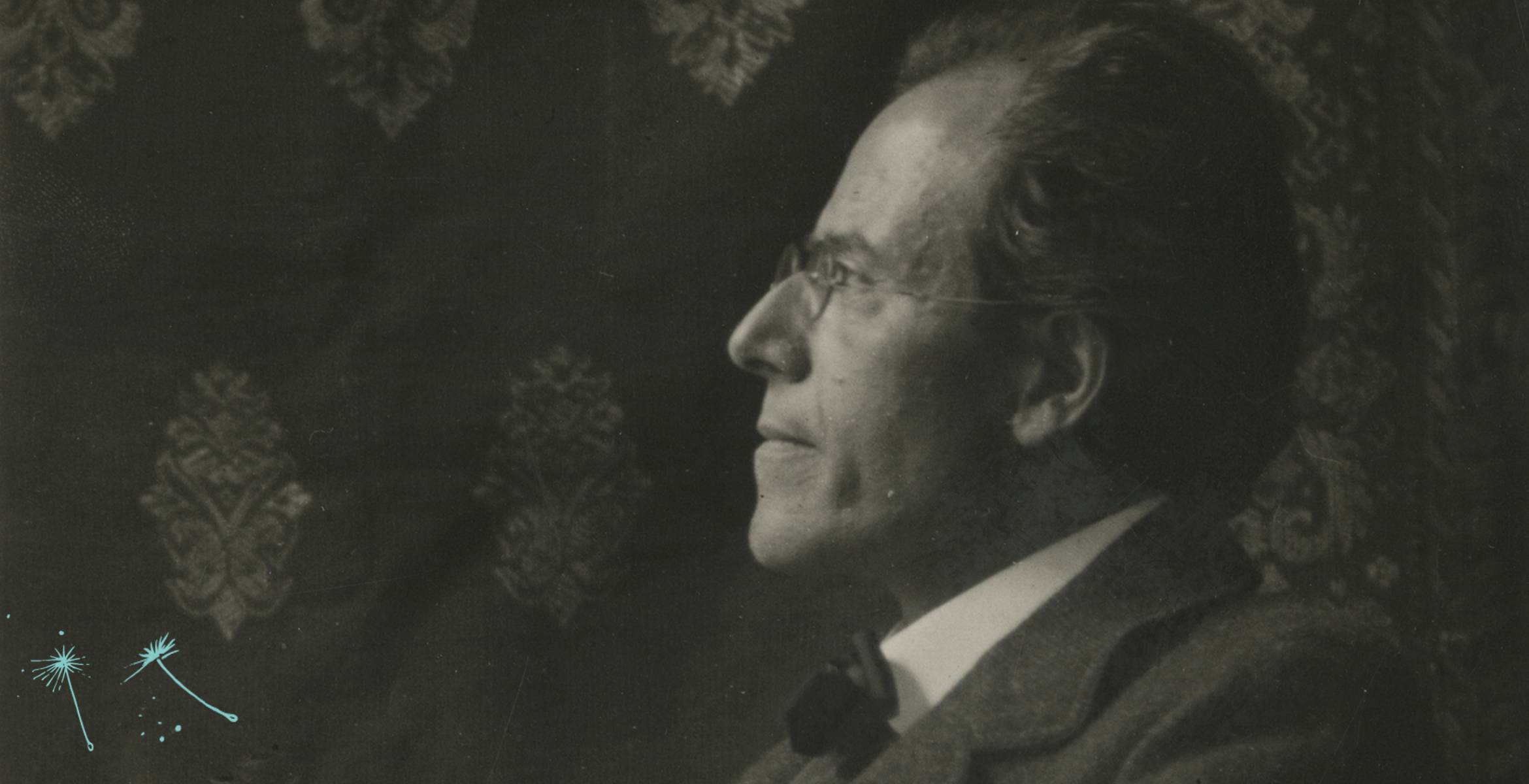
Mahler's Universe
1860 - 2025
His Life, Works, and Legacy
1860
Gustav Mahler born
On 7 July 1860 Gustav Mahler is born in the village of Kaliste in Bohemia...
Gustav Mahler born
On 7 July 1860 Gustav Mahler is born in the village of Kaliste in Bohemia (in the Austrian Empire, in what is today the Czech Republic). He will later say 'I was born in such a shabby little house, we didn’t even have glass in the windows.’ Gustav is the second son of a total of fourteen children born to Bernhard Mahler and Maria Hermann. Seven of his siblings die in their first year. In December 1860 the family moves from Kaliste to the provincial town of Iglau.
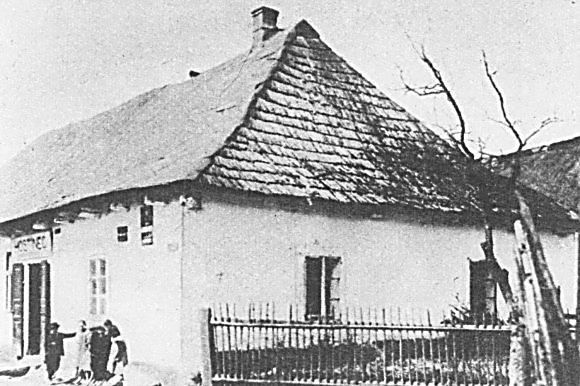
Acknowledgements: This timeline draws on information and quotations (translated from the German) from the book 'Gustav Mahler. Een leven in tien symfonieën' by Eveline Nikkels.
1865
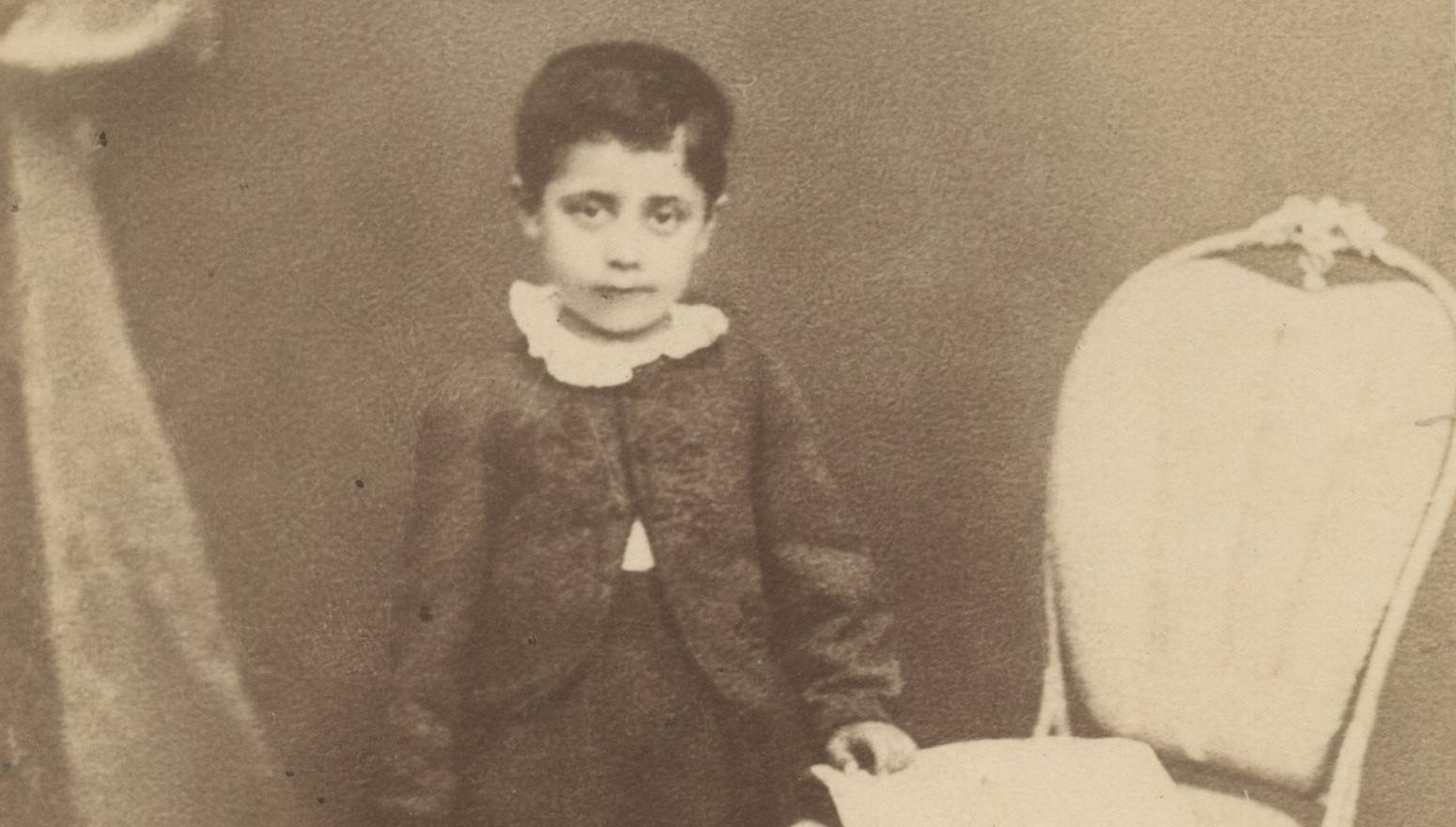
Mahler’s calling
The first photo we have of Gustav is as a five-year-old in Iglau, already holding some sheet music...

Mahler’s calling
The first photo we have of Gustav is as a five-year-old in Iglau, already holding some sheet music. During a visit to his grandparents, Gustav discovers an old out-of-tune piano in the attic. The sound of the instrument opens up a new world for him. Bernhard Mahler finds Gustav in the attic, seated at the piano in a trance, and decides his son must become a musician.
1870
Performing debut
In October 1870 in Iglau, young Gustav plays the piano in public for the first time...
Performing debut
In October 1870 in Iglau, young Gustav plays the piano in public for the first time. The concert is organised by his father, who firmly believes in the excellence of his 'Mozart'. Gustav does not make a lasting impression, possibly because, as the local newspaper reported, the quality of the grand piano leaves much to be desired.
Bernhard Mahler decides to broaden his son’s horizons. First Gustav, now twelve, spends some time in Prague and then, after a stop in Iglau, in 1875 ultimately ends up in the empire’s most prestigious musical institution: the conservatoire of the Gesellschaft der Musikfreunde in Vienna.
1878
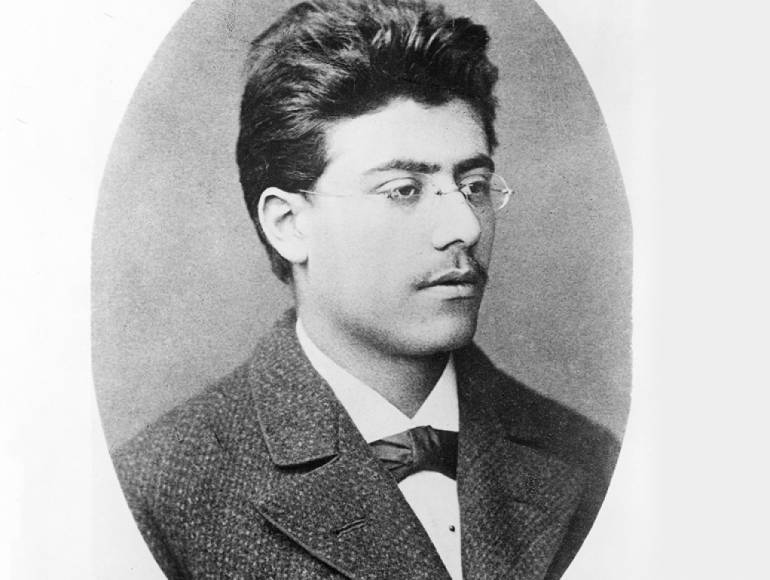
Mahler finishes conservatoire
Gustav Mahler graduates with flying colours from the conservatoire in Vienna at the age of eighteen...
Mahler finishes conservatoire
Gustav Mahler graduates with flying colours from the conservatoire in Vienna at the age of eighteen. By the end of his first year, he has both won a prize for his interpretation of a Schubert sonata and been honoured for a composition of his own, the first movement of a piano quartet.
While he is studying music in Vienna, Gustav finishes his ‘gymnasium’ education in Iglau from a distance. This takes him more trouble, since he has to re-sit an exam. Ultimately Gustav is very clear that he ‘learned nothing’ during his period at school.
1880
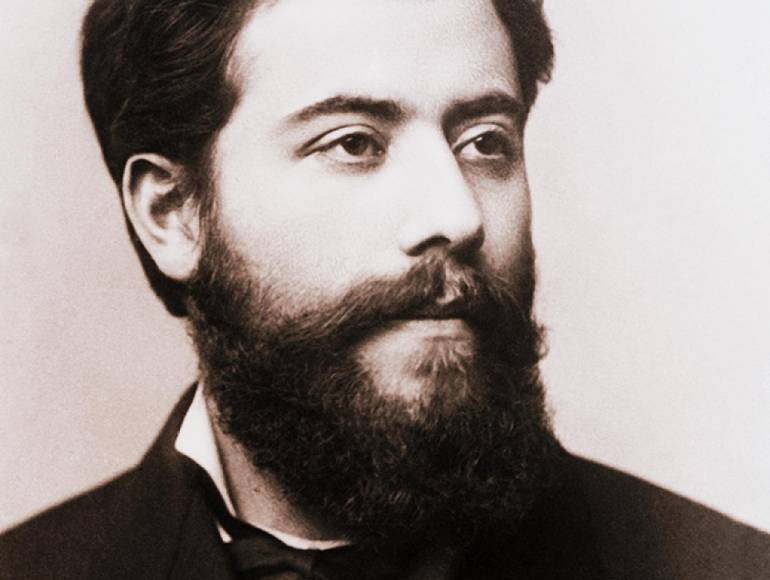
Kapellmeister Mahler
In 1880 Mahler, then still only nineteen, signs his first contract as a conductor (and jack-of-all-trades) in the small provincial theatre in Bad Hall...
Kapellmeister Mahler
In 1880 Mahler, then still only nineteen, signs his first contract as a conductor (and jack-of-all-trades) in the small provincial theatre in Bad Hall. After Bad Hall and an engagement in Laibach, Mahler ends up in Olmütz. Apparently his reputation has preceded him: ‘Someone is coming, who is a genius, but also full of quirks'.
At this time Mahler is in the middle of a vegetarian phase, and drinks no beer or wine. People in Olmütz find this downright strange. He never manages to get on with them, or as Mahler himself puts it: 'From the moment that I walked into the Olmütz theatre, I felt like one awaiting the wrath of God.'
Mahler leaves Olmütz and becomes second Kapellmeister of the Royal Theatre in Kassel. The engagement is disappointing, as Mahler is only allowed to conduct a few simple operas. One aspect of the job that does not disappoint is the coloratura soprano Johanna Richter, who works at the Kassel theatre. Mahler’s relationship with her is the inspiration for his first song cycle, Lieder eines fahrenden Gesellen (Songs of a Wayfarer).
1885
Mahler begins his Symphony No. 1
Mahler starts work on what will later become his Symphony No. 1, after previously completing three or possibly four (unnumbered) symphonies.
Mahler begins his Symphony No. 1
1888
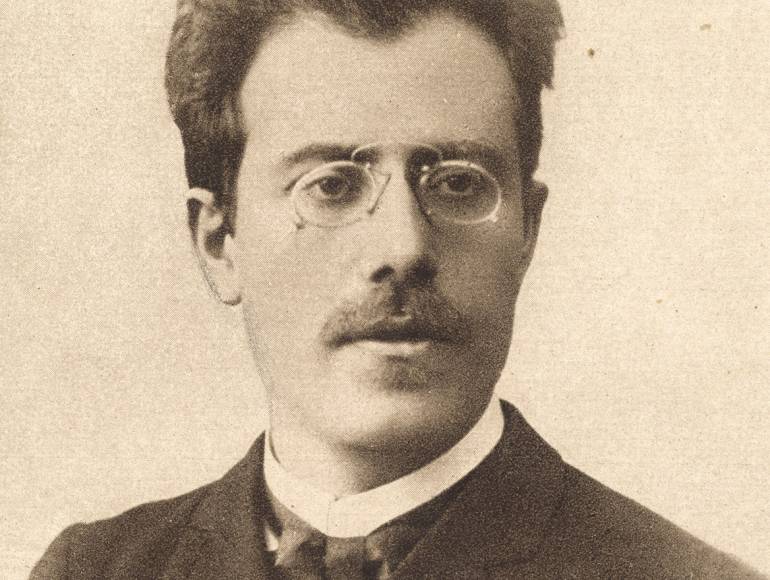
Creation of Todtenfeier
Mahler composes the symphonic poem Todtenfeier (‘Funeral Rites’), which later becomes part of the Symphony No. 2...
Creation of Todtenfeier
Mahler composes the symphonic poem Todtenfeier (‘Funeral Rites’), which later becomes part of the Symphony No. 2. In 1892 he plays Todtenfeier at the piano for the famous conductor Hans von Bülow, whose commentary is: ‘Tristan (Wagner’s opera, ed.) is a Haydn symphony compared with your piece'.
After hearing this from Von Bülow, Mahler finds it difficult to continue writing the symphony. Not until 1894, at the funeral of the conductor he so greatly admired, does he see how to round off his Second. In Mahler’s words, 'Then Bülow died and I attended the funeral. The mood that came over me fit exactly with my composition, so when the choir started singing [Klopstock’s] Auferstehn, it flashed on me like lightning. Everything immediately became clear in my mind.'
1889
'A miserable composer’
On 20 November 1889, a new symphonic poem by Mahler has its premiere in Budapest. This poem is the predecessor of his Symphony No. 1...
'A miserable composer’
On 20 November 1889, a new symphonic poem by Mahler has its premiere in Budapest. This poem is the predecessor of his Symphony No. 1. Mahler conducts the orchestra himself. As a composer, Mahler frequently goes far off the beaten path. One reviewer writes, 'This symphonic poem is by an unrestrained, indomitable talent, one that breaks with all conventional forms and aims to present something new, no matter what the cost.'
But with the sting in its tail, the review closes by saying, 'Mahler, you are a fantastic conductor but a miserable composer'.
1892
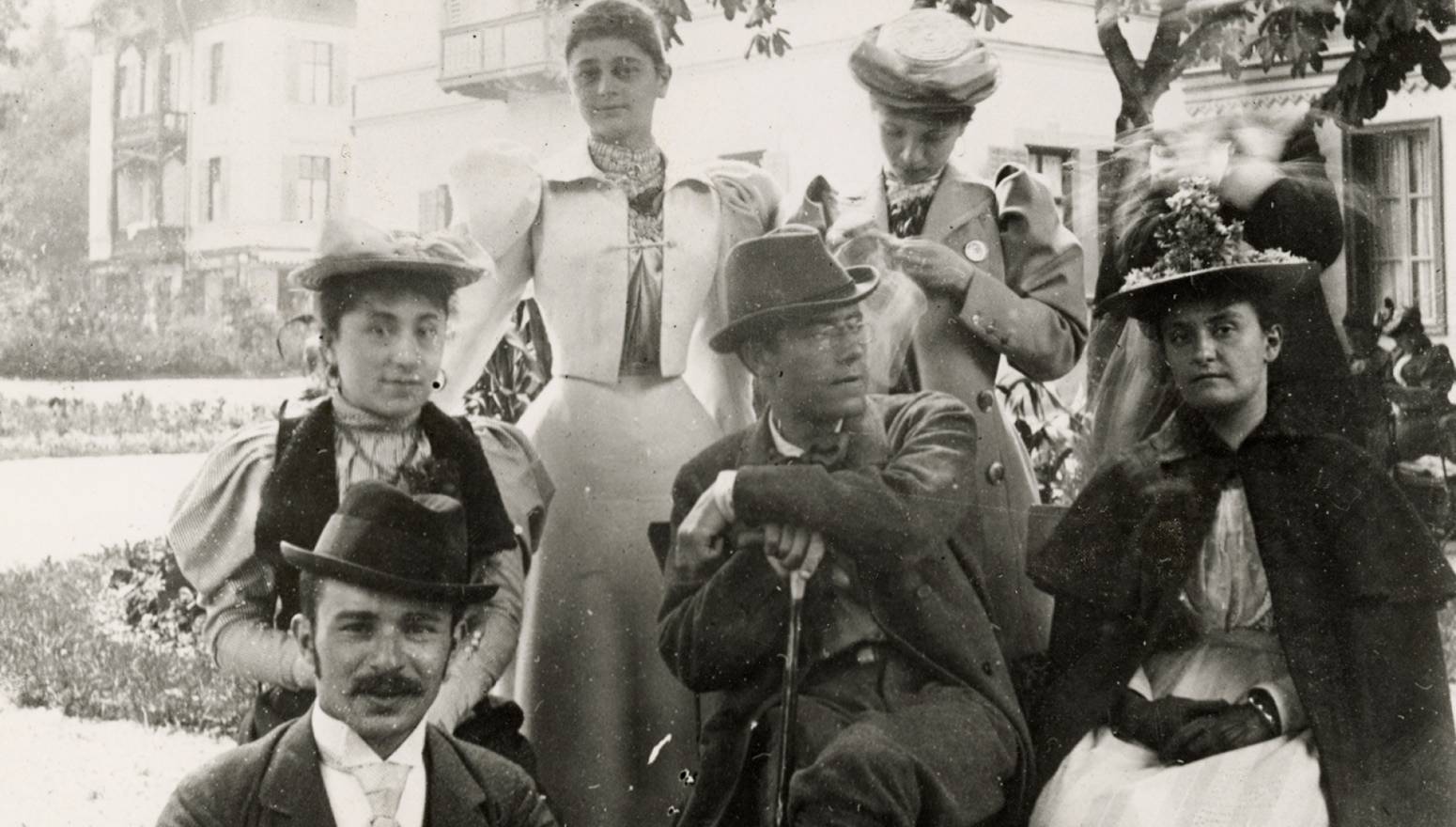
Mahler in Reichenhall
Gustav Mahler with his sister Justine (at right next to Mahler) and friends during a visit to Reichenhall.
1893
Summertime composing hut
Mahler begins his Symphony No. 3, working on it mostly during the summer in his 'komponierhäuschen' on the Attersee in Steinbach...
Summertime composing hut
Mahler begins his Symphony No. 3, working on it mostly during the summer in his 'komponierhäuschen' on the Attersee in Steinbach. He writes to the singer Anna von Mildenburg, his great love at the moment, about this symphony, ‘Dearest Anna, I am almost done with it, and it’s really phenomenal! My symphony will be something the like of which the world has never heard before. All of nature is given a voice in it and tells of something mysterious that you only know from your dreams. The whole thing will probably be entitled: Die fröhliche Wissenschaft, ein Sommermittagstraum [‘the joyful science, a summer daydream’; the ‘joyful science’ being a reference to a work by Nietzsche, ed.].'
Mahler has a ‘composing hut’ especially built for him to work out his ideas in the summer calm. He is obsessively attached to the silence around his cottage, and bribes children to stay away with sweets and toys. Travelling musicians are given compensation to not play or sing near the house, and a kind of scarecrow is set up to keep other undesired intruders at a distance.
The impressions that Mahler has in and around his cottage go directly into his music. As he says to the conductor Bruno Walter, who visits Mahler in Steinbach: 'You no longer have to look around here. I’ve put it all into the music'.
1894
Premiere of first three movements of Symphony No. 2
The first three movements of the Symphony No. 2 are premiered in Berlin. This five-movement symphony will played for the first time in its entirety a year later.
Premiere of first three movements of Symphony No. 2
1898
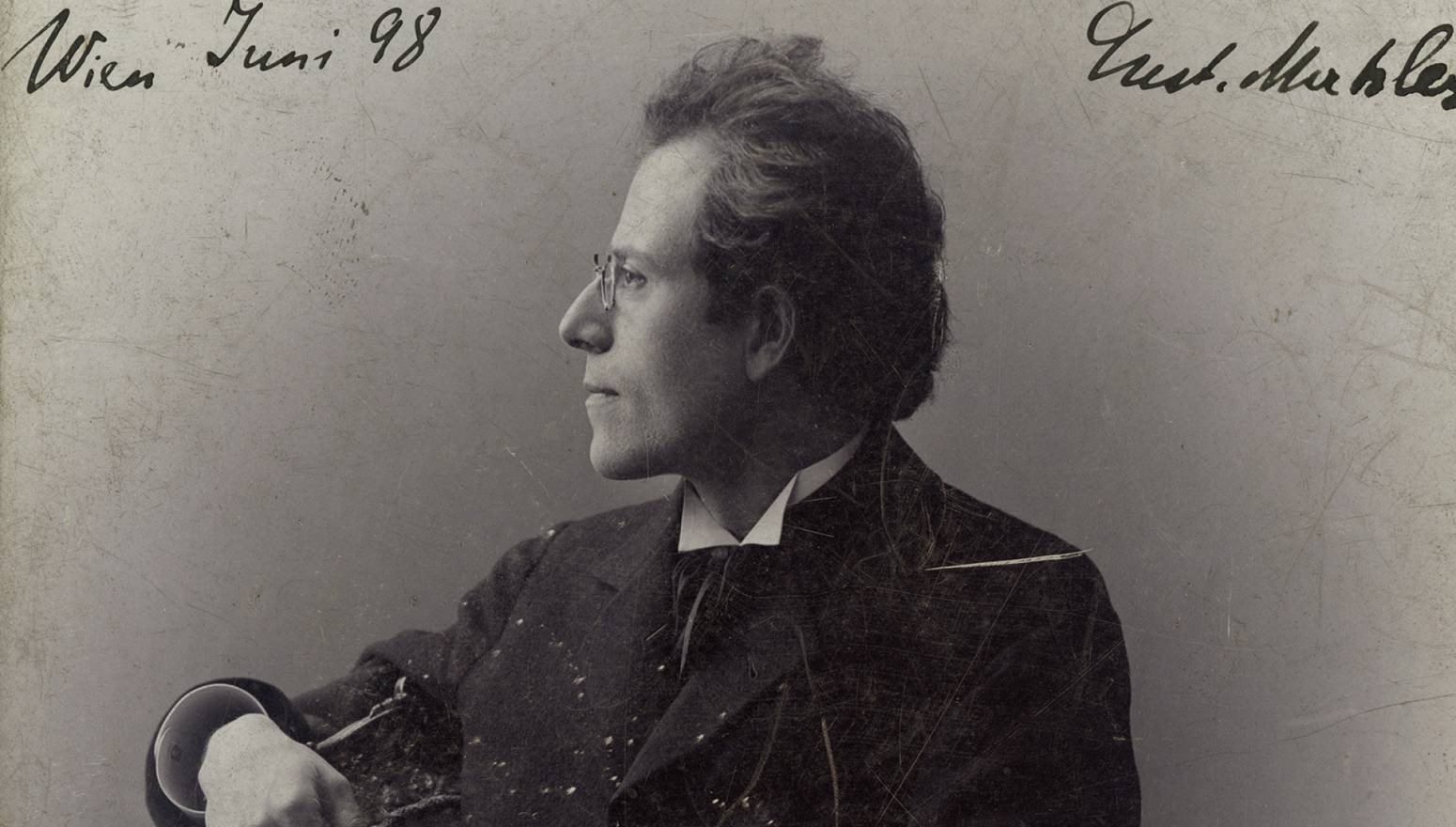
Mahler in Vienna
In October 1897 Gustav Mahler is appointed the new artistic director of the Vienna Court Opera, an extremely prestigious position that he will hold for ten years...
Mahler in Vienna
In October 1897 Gustav Mahler is appointed the new artistic director of the Vienna Court Opera, an extremely prestigious position that he will hold for ten years. For a few years, he conducts the operas in the theatre as well as the 'Philharmonische Konzerte', the ideal forum for him to perform his own symphonic works.
The ten years Mahler spends in Vienna are tumultuous ones. In January 1902 he resigns as conductor of the Philharmonic Orchestra. A year before, one of the newspapers wrote: 'In the Philharmonic circles there is more and more anti-Mahler sentiment. The conductor’s all-too-nervous disposition, his nitpicking in the preparatory rehearsals, and above all his tendency to listen to the whisperings of his confidants do not make him any more sympathetic. Desperate efforts are being made to find a new candidate for this prestigious position.'
1899
Beginnings of Symphony No. 4
In the summer of 1899 Mahler is working on his Symphony No. 4, or as he will later describe it, the 'symphony of the blue of the sky'...
Beginnings of Symphony No. 4
In the summer of 1899 Mahler is working on his Symphony No. 4, or as he will later describe it, the 'symphony of the blue of the sky'.
He completes the work in the summer of 1900. Mahler himself will say later about the Fourth: ‘I actually only wanted to write a symphonic humoresque, but it grew into a normal-length symphony, while I took three times as long to write the second and third. (...) The basic mood is blue, blue like the sky, but now and then it darkens and becomes ominous, ghostly. It only looks like it darkens, since the sky of course stays blue forever. It’s only we who can suddenly be seized with panic.'
1901
'Straightforward symphony in four movements'
Although the Fourth still has not had its premiere, Mahler begins his Symphony No. 5...
'Straightforward symphony in four movements'
Although the Fourth still has not had its premiere, Mahler begins his Symphony No. 5. He works on this symphony in his house in Maiernigg, with a view of the Wörthersee. Originally Mahler has planned to write a ‘straightforward symphony in four movements'. Perhaps he does not yet know that he will be adding an Adagietto to the symphony for his beloved Alma, whom he will meet in November 1901.
Conductor Willem Mengelberg later wrote about this movement (which would become Mahler’s most famous piece of music): 'This Adagietto was Mahler’s declaration of love to Alma. Instead of a letter, he sent her this manuscript, without adding another word. She understood him and wrote back: Come! (Both of them have told me this)'.
Gustav meets Alma
In early November 1901 Gustav Mahler meets the young Alma Schindler, daughter of the court painter Emil Schindler...
Gustav meets Alma
In early November 1901 Gustav Mahler meets the young Alma Schindler, daughter of the court painter Emil Schindler. In her memoires, Alma writes: 'Mahler noticed me immediately'. And she sees him immediately too, although she is reserved at first: ‘that fellow is only made of oxygen, you’ll burn up if you touch him.'
A few months of passionate correspondence follows. In one letter, Mahler writes to Alma, 'My deeply beloved girl, I had been unable to dream that I would, even once in my life, have the happiness of being loved by someone as much as I love her.' And 'I can hardly wait until I can hear from your mouth that my life ship has braved the storms to reach its haven'.
Alma and Gustav are married on 9 March 1902, four months after their first meeting, in the Karlskirche in Vienna. On 3 November of that year their first daughter is born.
'Much too simple themes'
On 25 November 1901, Mahler is in Munich, where he conducts the Müncher Philharmoniker in the premiere of his Symphony No. 4. The reviews are not favourable...
'Much too simple themes'
On 25 November 1901, Mahler is in Munich, where he conducts the Müncher Philharmoniker in the premiere of his Symphony No. 4. The reviews are not favourable, one of them denouncing its 'much too simple themes'. One critic is positive, writing about a ‘highly significant work that offers us a glimpse into a new musical realm'. The audiences are also divided, with both boos and bravos roaring in the hall.
1902
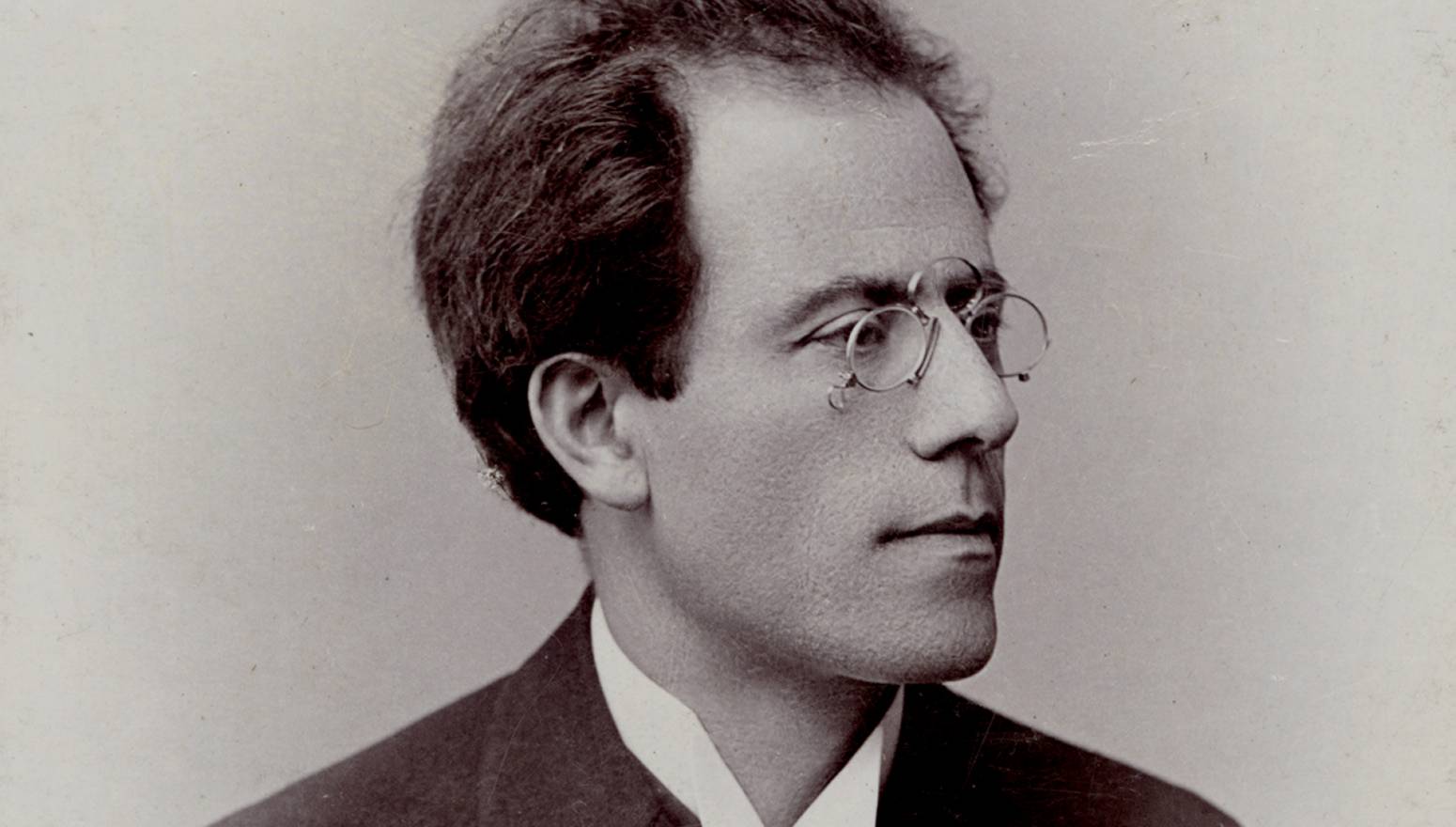
Meanwhile in Vienna...
On 12 January 1902, Mahler presents his Symphony No. 4 to his ‘home audience’ in Vienna, for the first time...
Meanwhile in Vienna...
On 12 January 1902, Mahler presents his Symphony No. 4 to his ‘home audience’ in Vienna, for the first time. The reaction is hostile, comparing it to ‘a piece of carnival music'. Even the orchestra members are rather more against than for the new work by their own conductor. For Mahler the composer in Vienna, the road to recognition is still a long one...
Premiere of complete Symphony No. 3
The first performance of the complete Symphony No. 3 is on 9 June in Krefeld, conducted by Mahler. In the audience is Willem Mengelberg, the young conductor of the Concertgebouw Orchestra in Amsterdam.
Premiere of complete Symphony No. 3
The first performance of the complete Symphony No. 3 is on 9 June in Krefeld, conducted by Mahler. The audience goes wild. As Alma Mahler put it: 'After the final movement a mad enthusiasm burst out, the audience jumped from their chairs and ran towards him'. Also in the audience is Willem Mengelberg, the young conductor of the Concertgebouw Orchestra in Amsterdam. He resolves that evening to always defend and promote Mahler’s music.
1903
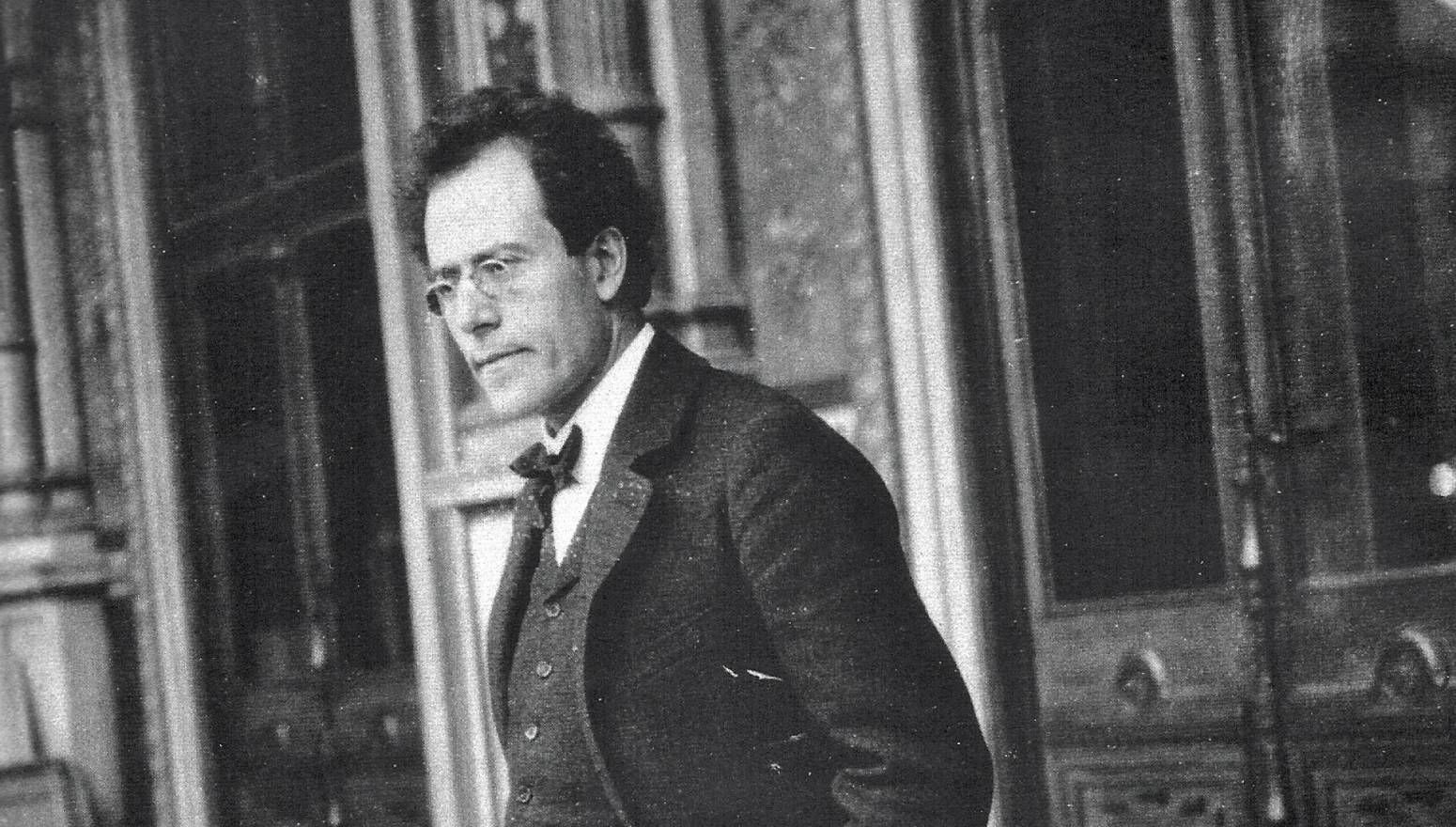
Symphony No. 6
'Only someone who has heard my first five symphonies can dare to fathom the mysteries of my Sixth', writes Mahler about his Symphony No. 6, the 'Tragic'...
Symphony No. 6
'Only someone who has heard my first five symphonies can dare to fathom the mysteries of my Sixth', writes Mahler about his Symphony No. 6, the 'Tragic'. Up to and including the Fourth, Mahler has always explained in words what his music was about, as a sort of listener’s manual. From the Fifth on, the listeners are on their own.
Yet not everything is enigmatic in the Sixth. Mahler has drawn a musical portrait of his first wife Alma in the second theme of the first movement: 'I’ve tried to capture you in a theme'. The Scherzo portrays young children playing, perhaps a look forward at his own children, since in 1904 Anna Justine, Gustav and Alma Mahler’s second daughter, is born.
The most remarkable aspect of the Symphony No. 6, however, is the three sledgehammer blows in the final movement symbolising the power of fate. Mahler had a chest specially built on which the percussionist had to give ‘a short, powerful but dull-sounding bang, just like that of a sledgehammer’.
And speaking of hammers, shortly after the premiere of the Symphony No. 6, the artist Theo Zasche mocks the way in which Mahler (and others such as his contemporary Richard Strauss) expanded the variety of instruments played by the traditional orchestra with hammers, cowbells, sleigh bells and other sounds, in his satirical print 'The Modern Orchestra' in the Illustrierten Wierner Extrablatt:
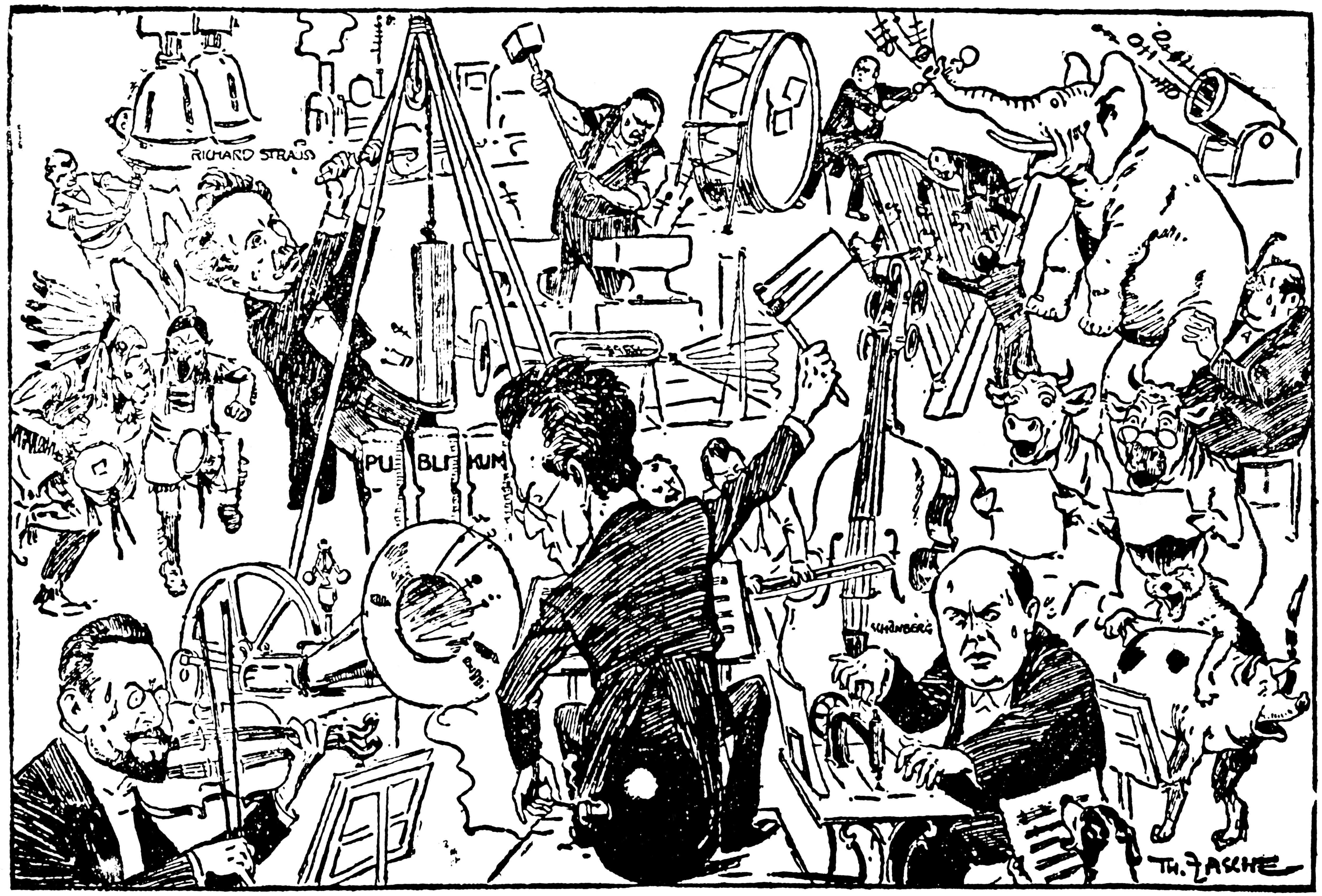
Mahler in the Netherlands
On 22 and 23 October 1903, Mahler conducts his Symphony No. 3 with the Concertgebouw Orchestra. It is his first time in the Netherlands...
Mahler in the Netherlands
On 22 and 23 October 1903, Mahler conducts his Symphony No. 3 with the Concertgebouw Orchestra. It is his first time in the Netherlands. Two days later, on 25 October, he also conducts the Concertgebouw Orchestra in the Netherlands premiere of his Symphony No. 1.
You can read all about Mahler’s relationship with Amsterdam – his second musical home – in an extensive article Mahler in Amsterdam by Jan Brokken. Read the article here.
1904
'An accursed work'
On 18 October in Cologne, Mahler conducts the premiere of his Symphony No. 5 with the Gürzenich Orchester Köln. This symphony has the famous Adagietto, which according to Willem Mengelberg is Mahler’s declaration of love to Alma...
'An accursed work'
On 18 October in Cologne, Mahler conducts the premiere of his Symphony No. 5 with the Gürzenich Orchester Köln. This symphony has the famous Adagietto, which according to Willem Mengelberg is Mahler’s declaration of love to Alma. Alma cannot attend, unfortunately, since she is in bed sick. Mahler is upset and writes to her: 'Do everything, sweat – swill cognac – devour aspirins, you can be cured of a cold in two days and be here Tuesday. Please Almschili, try everything. After all, it would be terrible if I were alone at my premiere.'
Nevertheless, Mahler is alone for the premiere, and has to weather the storm of criticism alone as well. Once again, the reviews are not favourable. On critic writes: ‘following a sombre funeral march with an even more sombre movement is a grave error'. The Adagietto is the most appreciated: ‘The clearest and best was number four of part three, a little Adagio.'
The Fifth would become one of Mahler’s best-loved works. He could not imagine this when he wrote ‘The Fifth is an accursed work. No one understands it.'
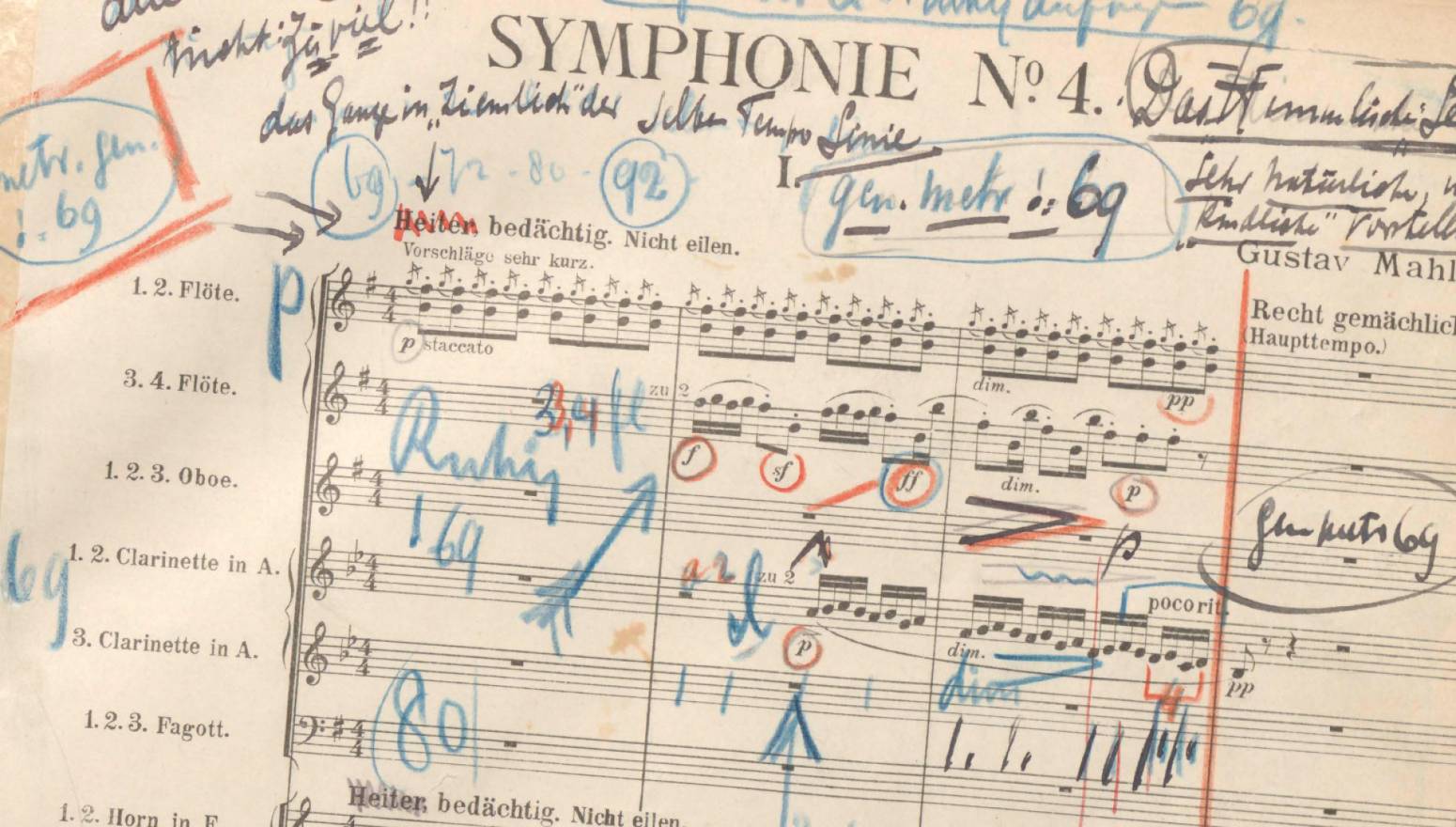
Back in the Concertgebouw
On 23 October 1904 in the Concertgebouw, Gustav Mahler conducts his Symphony No. 4 twice in the same concert, an idea of Willem Mengelberg’s...
Back in the Concertgebouw
On 23 October 1904 in The Concertgebouw, Gustav Mahler conducts his Symphony No. 4 twice in the same concert, an idea of Willem Mengelberg’s. A few days later, on 26 and 27 October, Mahler conducts the Concertgebouw Orchestra in the first performances of his Symphony No. 2 in the Netherlands.
You can read all about Mahler’s relationship with Amsterdam – his second musical home – in an extensive article Mahler in Amsterdam by Jan Brokken. Read the article here.
1905
Symphony No. 7
Mahler completes his Symphony No. 7 in the summer of 1905. He writes the work 'in a furore', in an outburst of creativity...
Symphony No. 7
Mahler completes his Symphony No. 7 in the summer of 1905. He writes the work 'in a furore', in an outburst of creativity. This outburst has taken its time; the inspiration for the Seventh was not spontaneous.
Usually Mahler got enough inspiration from the nature around his composer’s huts for his symphonies and songs, but for the Seventh he had to seek it elsewhere: 'For two weeks it just wouldn’t come, so in desperation I fled to the Dolomites. It changed nothing, so I just gave up and came home, thoroughly convinced that the summer would be a lost one.' However, salvation came in the form of a short boat ride across the Wörthersee between Maiernigg and Krumpendorf: 'At the first oar stroke, the theme of the introduction to the first movement came to me – and four weeks later the first, third and fifth movements were done.'
Symphony No. 7 is also known as 'The Night', not a nickname from Mahler himself, but from a few of those close to him. Among them was Willem Mengelberg, who described the Seventh thus: 'This is the night, tragic night. Here there are no stars, no moonlight, no peaceful sleep. The power of darkness reigns'.
1906
'The greatest yet'
At the end of the summer of 1906, Mahler completes his Symphony No. 8, the 'Symphony of a Thousand'. After three purely orchestral symphonies, the choirs and vocal soloists are back in Mahler’s work, and with a vengeance!
'The greatest yet'
At the end of the summer of 1906, Mahler completes his Symphony No. 8, the 'Symphony of a Thousand'. After three purely orchestral symphonies, the choirs and vocal soloists are back in Mahler’s work, and with a vengeance! The Eighth requires an immense force of soloists, choirs and orchestra; at its premiere in 1910 over a thousand performers were on the stage.
In this summer of 1906 Mahler writes to Willem Mengelberg: 'My dear good friend, I have just completed my Eighth. It is the greatest thing I’ve done yet. And so remarkable in both content and form that one actually can’t really write about it. Imagine the universe beginning to sing and make sounds. These are not human voices, but planets and suns revolving.'
Mahler conducts his Fifth in The Concertgebouw
On 8 March 1906, Mahler conducts his Symphony No. 5 in The Concertgebouw. Willem Mengelberg has already prepared the work with the orchestra...
Mahler conducts his Fifth in The Concertgebouw
On 8 March 1906, Mahler conducts his Symphony No. 5 in The Concertgebouw. Willem Mengelberg has already prepared the work with the orchestra. And that’s a good thing too, as Mahler writes Alma from Amsterdam: ‘Everything excellently rehearsed. Sounds wonderful. The orchestra is fantastic and especially fond of me. This time it’s a joy instead of drudgery.’ Performances of the Fifth conducted by Mengelberg follow in Rotterdam, The Hague, Arnhem and Haarlem.
You can read all about Mahler’s relationship with Amsterdam – his second musical home – in an extensive article Mahler in Amsterdam by Jan Brokken. Read the article here.
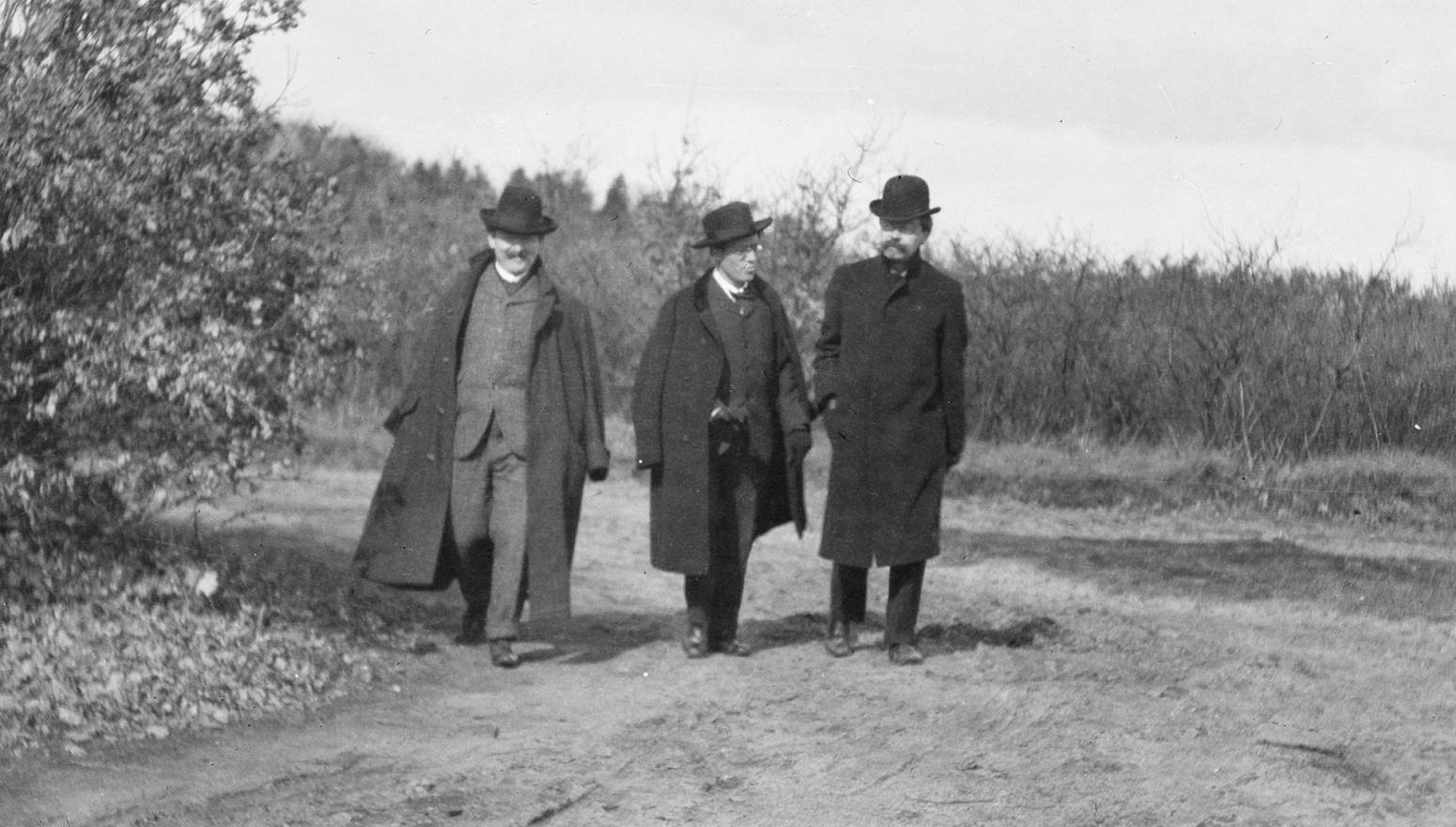
A walk in the Netherlands
A walk over the heath near Laren with kindred spirits. From left to right: Willem Mengelberg, Gustav Mahler and Alphons Diepenbrock.
Premiere of Symphony No. 6
On 27 May, the Symphony No. 6 has its premiere in Essen, with Mahler conducting the municipal orchestras of Essen and Utrecht...
Premiere of Symphony No. 6
On 27 May, the Symphony No. 6 has its premiere in Essen, with Mahler conducting the municipal orchestras of Essen and Utrecht. The audience is extremely enthusiastic, with lengthy and jubilant applause. Once again, the press is less enthusiastic about the work. One reviewer writes: 'I have now heard four of Mahler’s gigantic works and in fact, he keeps saying the same thing and it’s becoming more and more unbearable. He knows only the language of the brass players. He no longer converses with us: he screams, he rages and we wonder in astonishment: why make all this noise?'
1907
1907, a year of disasters
'We’ve had terrible misfortune, my oldest has scarlet fever and diphtheria', Mahler writes on 4 July 1907...
1907, a year of disasters
'We’ve had terrible misfortune, my oldest has scarlet fever and diphtheria', Mahler writes on 4 July 1907. A few days later, on 12 July, A Viennese newspaper reports ‘Twelve days ago the eldest Mahler daughter caught scarlet fever and despite receiving the best possible care, died early this morning.'
The disastrous year of 1907 is not over for the Mahler family. Several weeks later, with no immediate cause for concern, Gustav Mahler decides to have himself examined by a doctor, who detects a double heart defect. His advice is to take life easy from now on, and above all, to avoid stress – for Gustav Mahler a sheer impossibility.
From Vienna to New York
After years of disputes and intrigues, as well as great artistic success, in December 1907 Mahler leaves the Vienna Court Opera...
From Vienna to New York
After years of disputes and intrigues, as well as great artistic success, in December 1907 Mahler leaves the Vienna Court Opera. His farewell letter to the opera staff says, ‘Dear members of the court opera, it’s come to this, our collaboration has ended. I’m leaving the stage that has become so dear to me, and saying farewell to you. Instead of leaving a completed project, as I had dreamed, I’m leaving a mass of wreckage behind me. In the heat of the battle we were not spared wounds, but if a work was successful, we forgot the hurt and felt ourselves richly rewarded. Thank you for fighting with me and for your willingness to help me with my difficult, often thankless task. I wish you all well.'
Mahler’s musical farewell is a performance of his Symphony No. 2. An eyewitness writes: 'The applause was colossal, swelling to the force of a hurricane and bringing the composer to tears. Mahler was called back onto the stage thirty times, women were weeping and waving handkerchiefs. The cries of ‘Hoch, Hoch’ would not stop...' As he boards the train from Vienna, Mahler is waved off by his fans.
America calls, New York, to be precise. Mahler has been engaged by the Metropolitan Opera. He also conducts several other New York orchestras including the New York Philharmonic. He is not immediately taken with the American concert scene, writing to Bruno Walter that 'My orchestra here is a real American orchestra, phlegmatic and untalented'.
1908
Das Lied von der Erde
In the summer of 1908 Mahler is working on his symphonic song cycle Das Lied von der Erde (The Song of the Earth)...
Das Lied von der Erde
In the summer of 1908 Mahler is working on his symphonic song cycle Das Lied von der Erde (The Song of the Earth). The tragic events of 1907 find their way into the work. Or, as the refrain of Das Lied von der Erde tells us: 'Dunkel ist das Leben, ist der Tod' (dark is life, is death). Mahler writes to Bruno Walter about Das Lied: 'I don’t yet know what to call my new work. I’ve had a splendid time and I think it is indeed the most personal thing I’ve written so far'.
'Rusty watering can'
The Symphony No. 7 has its premiere on 19 September 1908 in Prague. Mahler conducts the Philharmonic Orchestra, with additional musicians from the opera orchestra...
'Rusty watering can'
The Symphony No. 7 has its premiere on 19 September 1908 in Prague. Mahler conducts the Philharmonic Orchestra, with additional musicians from the opera orchestra. Alma Mahler describes Mahler at the time of the premiere: 'When I arrived [in Prague] Mahler was nervous and nearly sick. Pages were lying all over the floor, he was hesitant about everything and avoided company.'
Otto Klemperer, who will become one of the twentieth century’s greatest conductors, remembers: ‘Every day after rehearsal, he would take all the orchestral materials home. We wanted to help him but he wouldn’t let us.' Ultimately Mahler needs twenty rehearsals for the premiere of the Seventh. 'I have to figure out how to turn a sausage pot into a kettle drum, a rusty watering can into a trumpet and a tavern into a concert hall'. But the struggle is worthwhile, with both the audience and the press ebullient about Mahler’s latest work.
1909
'A lovely addition to my little family'
In the summer of 1909 Mahler composes his Symphony No. 9. Initially the inspiration does not come...
'A lovely addition to my little family'
In the summer of 1909 Mahler composes his Symphony No. 9. Initially the inspiration does not come. Mahler is irritated by the neighbours’ noise: 'Either the neighbours are whispering so that the windows rattle, or they’re walking on their tiptoes so that the house is rocking. The dog as well constantly reminds me that I’m just one person among others, and barks from early morning to late at night and even after that!'
But before summer is over, Mahler writes to Bruno Walter: 'The work – as far as I know it, since until now I’ve been writing indiscriminately and now as I orchestrate the last movement, I don’t recognize the first movement any longer – is a lovely addition to my little family. In it, I say everything I’ve had at the top of my tongue for a long time; perhaps it most resembles the Fourth, but it is still very different. The score, because of the insane haste with which I must write, looks sloppy and to unfamiliar eyes it must look nearly illegible'.
As with the Lied von der Erde, Mahler cannot avoid the subject of death in the Ninth. He describes how the march in the first movement must be played 'like a sombre funeral procession’. In no other work of his does the music die away at the end as it does in the Symphony No. 9. 'Leb! Wol! Leb! Wol!' notes Mahler in final bars of the manuscript: 'Farewell!' Farewell!'. Willem Mengelberg describes the Ninth as a 'farewell to everything he loved and to the world! And to his art, his life, his music.'
Mahler will not live to hear his Symphony No. 9 performed.
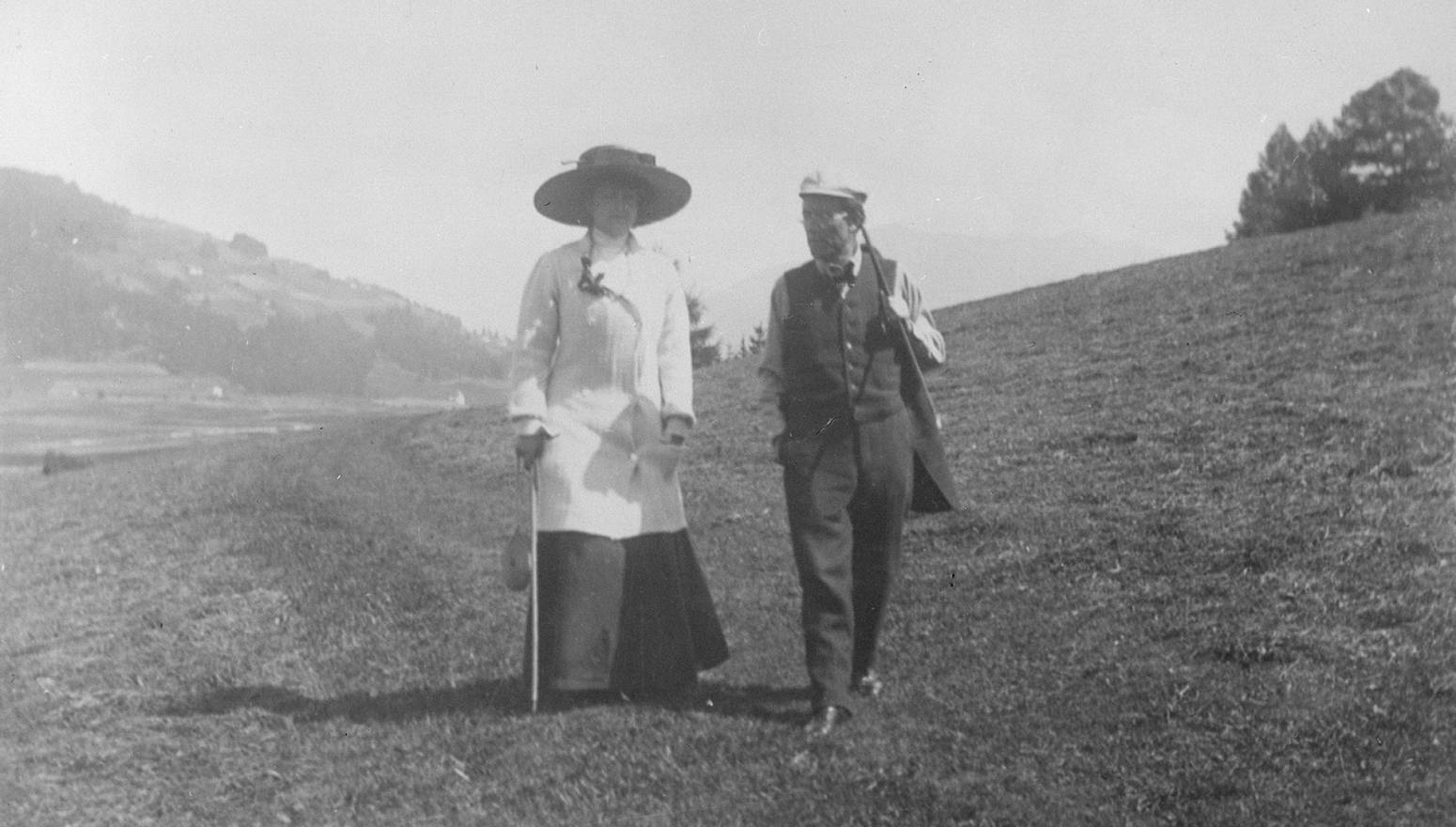
Alma & Gustav Mahler out for a walk
Alma and Gustav on a walk from Toblach to Altschluderbach, during the summer he composed his Symphony No. 9.
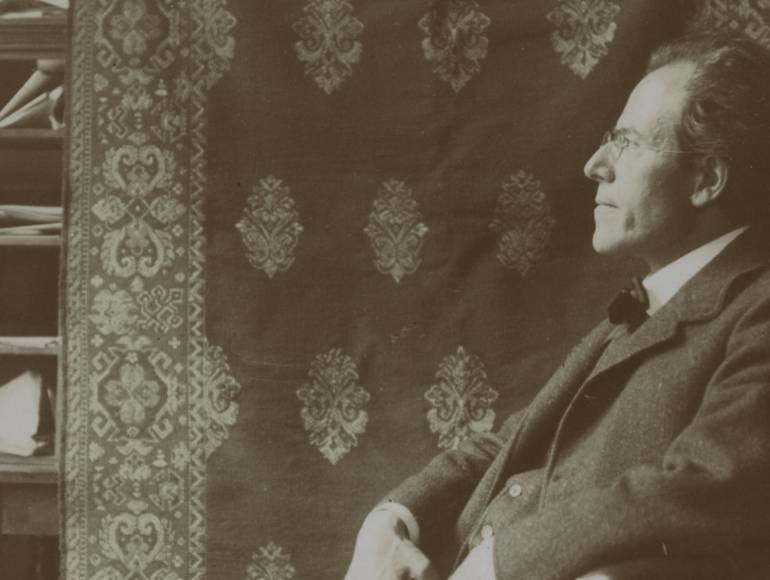
'He played with the orchestra'
In autumn 1909, Mahler returns to the Netherlands to conduct the Concertgebouw Orchestra in his Symphony No. 7. 'Once again, everything is wonderfully rehearsed', he writes to Alma...
'He played with the orchestra'
In autumn 1909, Mahler returns to the Netherlands to conduct the Concertgebouw Orchestra in his Symphony No. 7. 'Once again, everything is wonderfully rehearsed', he writes to Alma about the way in which Mengelberg has prepared the orchestra. Mengelberg has had the orchestra for a full week, mornings and evenings, to work on the symphony. As one orchestra member reminisces, 'I cannot remember a work ever being rehearsed with such precision.’
The same player says of Mahler the conductor: 'He was a great master. He conducted his symphony almost motionlessly, leading the orchestra more with his eyes than with his right hand. Mahler was playing with the orchestra, as it were, and every musician felt that he had to play his part the way the little-big tyrant compelled him to.'
You can read all about Mahler’s relationship with Amsterdam – his second musical home – in an extensive article Mahler in Amsterdam by Jan Brokken. Read the article here.
1910
Beginning of Symphony No. 10
Mahler begins working on his Symphony No. 10 in 1910. He finishes the Adagio, and the rest only survives as sketches...
Beginning of Symphony No. 10
Mahler begins working on his Symphony No. 10 in 1910. He finishes the Adagio, and the rest only survives as sketches. These sketches contain both music and other notes, sometimes very personal, such as the words 'Für dich leben, für dich sterben, Almschi'. According to Alma Mahler, this was the fallout from a marital crisis in the summer of 1910.
Meeting Freud
Mahler returns to the Netherlands once more, in 1910. Not to conduct, but for a lightning visit to Sigmund Freud, while the latter is on holiday by the sea in Noordwijk...
Meeting Freud
Mahler returns to the Netherlands once more, in 1910. Not to conduct, but for a lightning visit to Sigmund Freud, while the latter is on holiday by the sea in Noordwijk. Mahler talks with the psychoanalyst Freud about his complicated relationship with Alma. Freud’s conclusion is 'I know your wife. She loved her father and can only love someone of that type. Your age, which you fear, is exactly what she finds attractive in you. Do not be worried! You love your mother, you have sought her type in every woman.'
Triumph!
On 12 September Mahler conducts the first performance of his Symphony No. 8, in Munich. With forces of over a thousand, the concert is a resounding success...
Triumph!
On 12 September Mahler conducts the first performance of his Symphony No. 8, in Munich. With forces of over a thousand, the concert is a resounding success, and critics from Germany and abroad talk of an extraordinary event.
Alma Mahler writes: ‘The inner experiences of everyone who must have been there were unimaginable. Equally unimaginable was the outward success. Everything and everyone threw themselves at him. I waited backstage, deeply moved. Then we rode back to the hotel, our eyes filled with tears. Waiting at the door was a certain J.L. from New York, who stammered: Since….since, since Brahms nothing like this has been written.'
1911
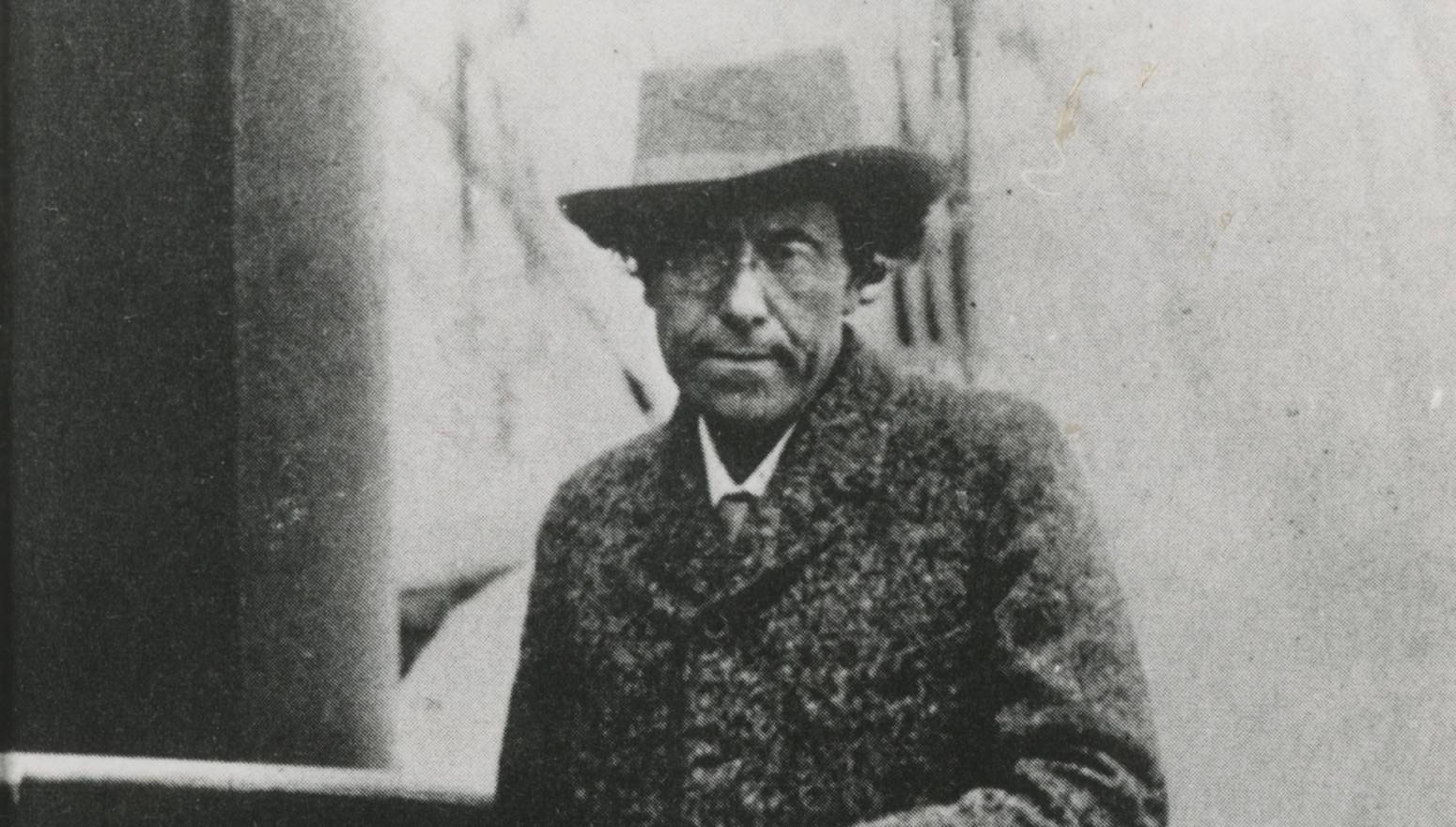
The final crossing
Photo of Mahler on 8 April 1911, on board the ship that would carry him from New York to Europe for the last time.
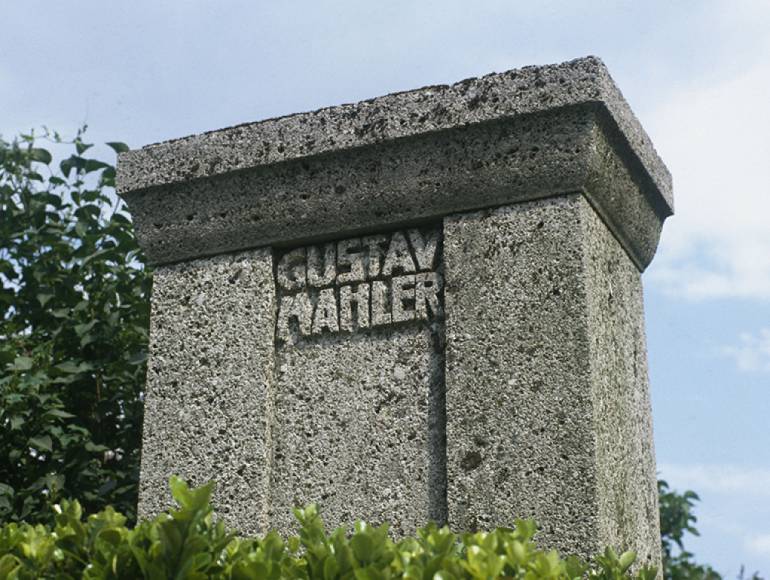
'Mozartl, Mozartl'
Gustav Mahler dies on 18 May 1911 in Vienna. His last words are 'Mozartl, Mozartl'...
'Mozartl, Mozartl'
Gustav Mahler dies on 18 May 1911 in Vienna. His last words are 'Mozartl, Mozartl'. He is buried the next day in Grinzing, next to his daughter Maria.
1912
Premiere of Symphony No. 9
On 26 June 1912 Mahler’s friend Bruno Walter conducts the premiere of the Symphony No. 9, with the Wiener Philharmoniker...
Premiere of Symphony No. 9
On 26 June 1912 Mahler’s friend Bruno Walter conducts the premiere of the Symphony No. 9, with the Wiener Philharmoniker. Besides Mahler’s Ninth the concert also includes Beethoven’s Symphony No. 9.
1920
Mahler Festival in Amsterdam
Willem Mengelberg celebrates his twenty-five-year anniversary as conductor of the Concertgebouw Orchestra with a festival dedicated to his friend and idol...
Mahler Festival in Amsterdam
Willem Mengelberg celebrates his twenty-five-year anniversary as conductor of the Concertgebouw Orchestra with a festival dedicated to his friend and idol. During the fifteen days of the ‘Mahler Feest’ in May 1920, orchestra and conductor perform the nine completed symphonies, Das klagende Lied, Lieder eines fahrenden Gesellen, Kindertotenlieder, Das Lied von der Erde and the five Rückert-Lieder. Present are Alma Mahler (who is staying on the Museumplein with a noble lady) and Arnold Schönberg, another of Mengelberg’s protegés. Alma noted: ‘Arrival in Amsterdam... port... ships’ masts... rigging... hustle and bustle... chilly, overcast...in a nutshell, Holland. ‘Evening Mahler’s Second in an unsurpassed performance.’
It is a unique festival, with only one ambition, but this should not diminish it: ‘Just as Bayreuth has become the model and the standard for all performances of Wagner’s works, Amsterdam has been made the spiritual centre of Mahler’s art.’ These are the words of its organiser, Dr. Rudolf Mengelberg, a distant cousin of the conductor’s. Amsterdam would become the foremost Mahler city.
1924
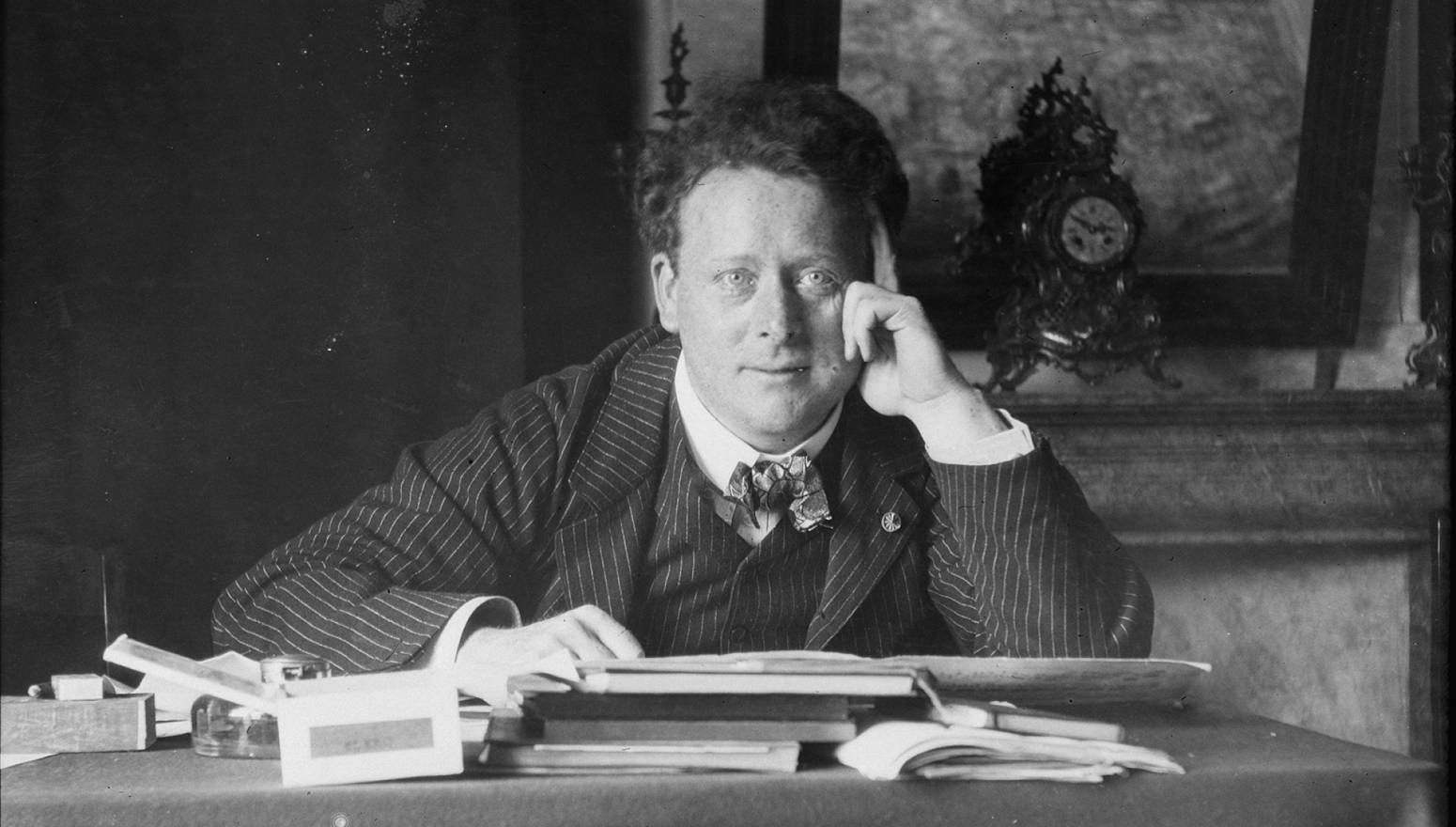
Arrangement of Symphony No. 10 by Mengelberg
Willem Mengelberg and his assistant Cornelis Dopper make an arrangement of two movements from the Symphony No. 10. He performs them with the Concertgebouw Orchestra on 27 November.
1995
Mahler Festival 1995
Once, again, seventy-five years after the 1920 Mahler Feest, practically all of Mahler’s works are played during a large-scale festival...
Mahler Festival 1995
Once, again, seventy-five years after the 1920 Mahler Feest, practically all of Mahler’s works are played during a large-scale festival. The Concertgebouw Orchestra does not have to play all the symphonies this time, however, since the Vienna Philharmonic and Berlin Philharmonic orchestras are also there. A stage is constructed on the Museumplein so that the concerts in the Main Hall can be followed live outdoors. And there is an exhibition about Mahler in the city’s archives and elsewhere. All of Amsterdam is bubbling over with Mahler!
2020
Mahler Festival 2020
Exactly one hundred years after the Mahler Festival organized by Willem Mengelberg, The Concertgebouw was supposed to once again become the stage for a grand Mahler Festival. As in 1995 with the Wiener and Berliner Philharmoniker, in addition to, of course, the Concertgebouw Orchestra. A first in 2020 was to be the participation of the New York Philharmonic, where Mahler was "music director" from 1909 to 1911. Unfortunately, due to the COVID-19 pandemic, the festival was canceled.
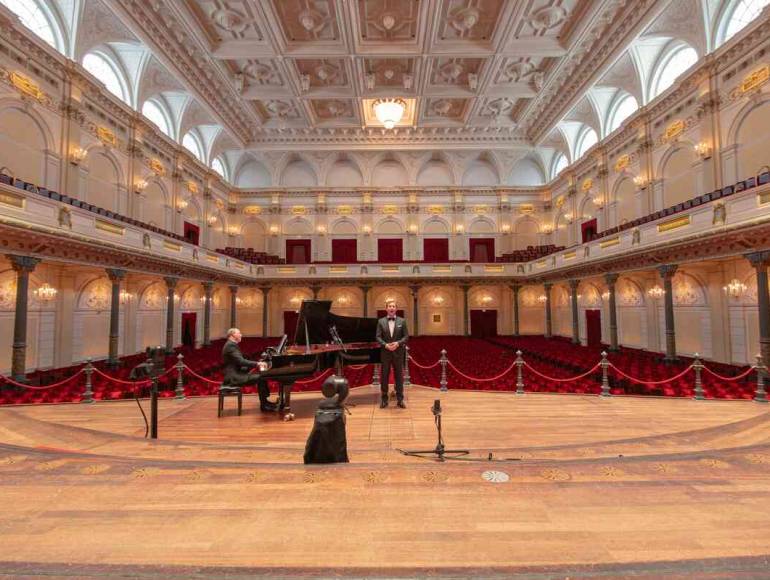
Mahler Festival Online
Following the disappointment of the cancellation of the Mahler Festival 2020, The Concertgebouw organized the Mahler Festival Online during the corona pandemic...

Mahler Festival Online
For ten days, music lovers from around the world were able to enjoy more than 25 streams (including concert recordings, documentaries and Empty Concertgebouw Sessions) presented online.
2025
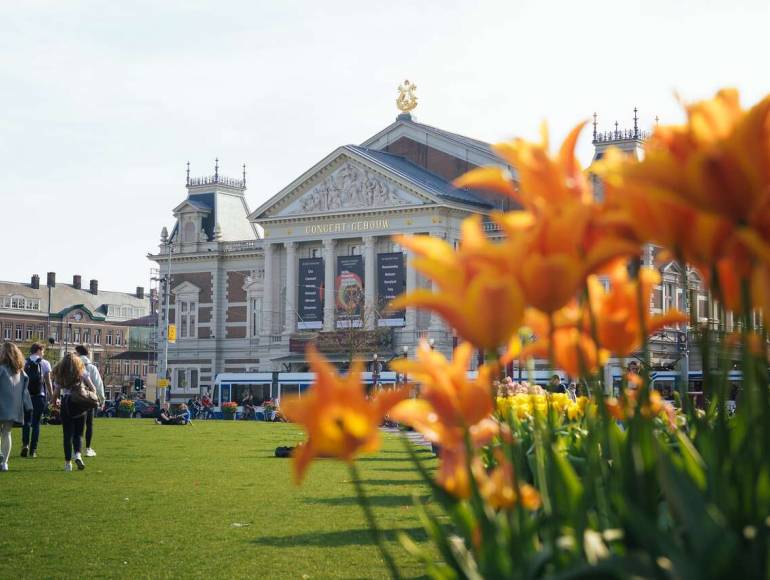
Mahler Festival 2025
It is going to happen after all!

Mahler Festival 2025
From May 9 through May 18, 2025, The Royal Concertgebouw will host the third Mahler Festival in its history! 105 years after the first Mahler Festival, orchestras from around the world will come together in Amsterdam for a grand tribute to the composer. During this ten-day festival, all of the composer's symphonies and songs will be performed. The Concertgebouw Orchestra, led by its future chief conductor Klaus Mäkelä, will give the opening concert with Mahler's Symphony No. 1. The Berliner Philharmoniker concludes the festival with Mahler's unfinished Symphony No. 10. Together with young singers, pianist Julius Drake performs Mahler's complete song repertoire in the Recital Hall.